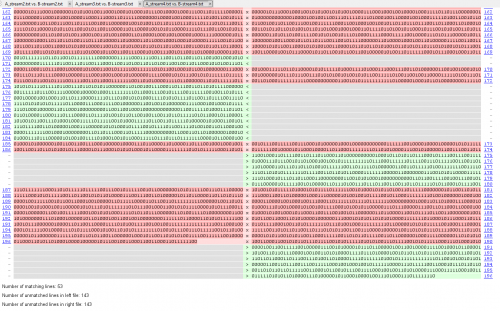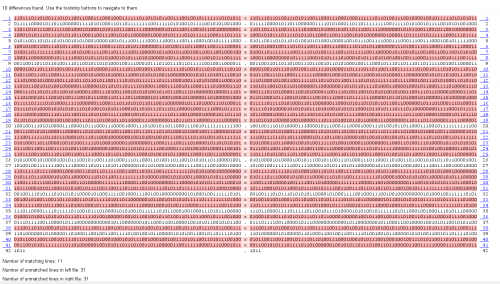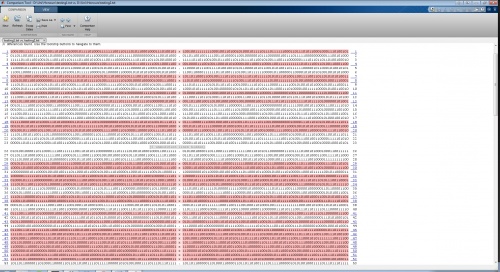Timing Based Encryption: Test Case 5
Alice and Bob on different networks
The physical layer security program was run by two computers on different networks. In theory, this scenario could produce worse results than the LAN test did, as the randomness in the internet channel could produce discrepancies in the reconciled Bob/Alice bit streams. As testing was done, it was split into two different categories - steady channel, and noisy channel. Steady channel refers to the program being run on the two machines under normal conditions (over the internet - it will still be noisy and random). Noisy channel refers to the programs being run on the two machines under heavy traffic circumstances. This is simulated by the sender and recipient using all of the upload/download speed during the operation of the program to check if it has any effect on the results.
Testing
Steady channel
Test 1

We see that in this lengthy test run of approximate length 16000, the bit streams were able to stay in sync very well, with a low bit error rate of 6%. Although this appears to be a moderately high number for this kind of application, when we consider the fact that this stream was 16000 in length, it is bound to accumulate errors over time leading to this deceivingly high number. When we consider what this means practically however, such as if we were to use this as a one time pad, it is clearly not a big issue.
Test 2

We see that in this test, the length of the bit streams was reasonable smaller, being only 3600, however this is still reasonably long. This test showed us better results than the first one, yielding a bit error rate of 1.9%. In conjunction with the first test result, we note that using the program for an excessive period of time may cause the bit error rate to go up.
Noisy channel
Test 1

This was the first test which was conducted under 'noisy' circumstances. The results were actually extremely good, as we can see the Bit Error Rate is an extremely low 1.361%. This is lower than either of the tests for the 'steady channel' and it was just as long as the first test. So, even though the bit stream was extremely long, the bit error rate was extraordinarily good under these simulated 'noisy' circumstances.
Test 2

The second 'noisy' test result backs up the first one. The bit error rate was even lower, the lowest recorded to date, being 0.994%. This was achieved using a bit stream of length 5000, so the bit stream was not even made to be short to achieve this good result.
Summary of Results
The results show that in a 'noisy' channel, the bit error rate is actually better after reconciliation. This can be attributed to the extra randomness which comes from this additional noise, which actually suits our protocol nicely. It is important to note that even in a 'steady' channel, the results are still extremely good - and in every case the two bit streams stay in sync very well.



